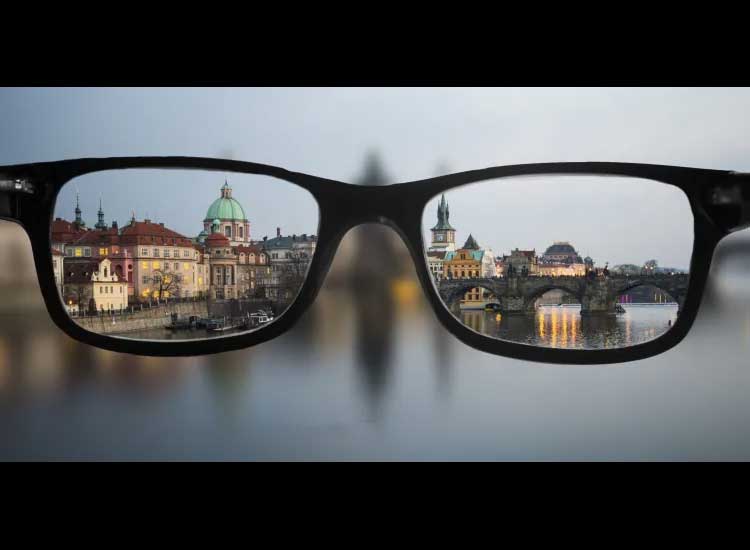What is Myopia?
Myopia or nearsightedness is a condition of abnormality in eye function that causes sufferers to have difficulty seeing certain objects. Myopia causes the sufferer to be unable to see objects that are too far away.
However, people with nearsightedness or myopia can still see objects at close range. Myopia occurs because the eyeball or retina is too curved, which results in light rays not being focused on the surface of the retina as it normally does.
So, after understanding what nearsightedness is, what are the symptoms of nearsightedness?, the causes of nearsightedness?, and how to treat it? To answer all these questions, the author has written below.
The following are the symptoms of nearsightedness (myopia):
Blurred or blurry when looking at distant objects:
Myopia or nearsightedness has several symptoms. One of the main symptoms of nearsightedness is difficulty seeing distant objects clearly. Objects that should look sharp will appear blurry or blurry.
Difficulty reading small print:
The second symptom of nearsightedness or myopia is difficulty reading small print. People with nearsightedness often have difficulty reading small texts or writing, especially if they are far away.
Excessive blinking
The third symptom of nearsightedness or myopia is excessive blinking. Someone with nearsightedness may tend to blink more often. This could be a natural reaction to try to overcome discomfort or improve visual focus.
Wrinkle your eyes
The fourth symptom of nearsightedness or myopia is squinting the eyes. When looking at distant objects, someone with nearsightedness will often wrinkle their eyes or furrow their eyebrows to try to clarify their vision. This is an effort to help bring objects into better focus.
Sensation of tiredness or strain in the eyes
The fifth symptom of nearsightedness or myopia is a sensation of tiredness or tension in the eyes. Intense use of vision in conditions of nearsightedness can cause the eyes to feel tired or strained. This especially occurs after long periods spent looking at distant objects or doing activities that require sharp vision.
The following are the causes of minus eyes (myopia):
Genetic factors
The main cause of nearsightedness or myopia is genetic factors. Genetic predisposition plays an important role in the development of nearsightedness. If your parents or close family members have nearsightedness, you have a higher risk of developing the same condition.
Eyeball shape
The second cause of nearsightedness or myopia is the shape of the eyeball. Myopia occurs when the eyeball is too long. If the eyeball is longer than normal, the focus of light will occur in front of the retina, resulting in blurry vision of distant objects.
Curved cornea
The third cause of nearsightedness or myopia is a curved cornea. Apart from the length of the eyeball, a cornea that is too curved can also cause nearsightedness. If the cornea is too steep, light will be focused in front of the retina rather than on its surface.
Environmental factor
The fourth cause of nearsightedness or myopia is environmental factors. Several studies show that environmental factors also play a role in the development of nearsightedness. These factors include intensive exposure to bright light or radiation, as well as the habit of reading or using screens at close range during growth.
Hormonal changes
The final cause of nearsightedness or myopia is hormonal changes. Several studies show that hormonal changes during adolescence, such as during puberty, can influence the development of nearsightedness.
How to Treat Minus Eyes (Myopia)
Glasses or contact lenses
The first way to treat nearsightedness or myopia is to use glasses or contact lenses. The use of glasses or contact lenses is a common method used to correct nearsightedness. Glasses or contact lenses with minus lenses will help shift the focus of light to the surface of the retina, so that distant objects can be seen more clearly. Usually, the prescription for glasses or contact lenses will be adjusted by an eye doctor or optometrist according to the severity of the nearsightedness.
Special contact lenses
The second way to treat myopia or myopia is to use special contact lenses. Apart from ordinary contact lenses, there are special types of contact lenses designed to correct nearsightedness. For example, orthokeratology contact lenses (Ortho-K) can be worn while sleeping to change the shape of the cornea and provide clear vision upon waking and throughout the day.
Refractive surgery
The third way to treat myopia or myopia is to perform refractive surgery. If you want to reduce your dependence on glasses or contact lenses, you may consider refractive surgery. This procedure involves using a laser or surgery to change the shape of the cornea and improve the focus of light in the eye. One common refractive surgery procedure is LASIK (Laser-Assisted in Situ Keratomileusis).
Intraocular lens
The fourth way to treat nearsightedness or myopia is to use intraocular lenses. For more severe cases of nearsightedness, an eye doctor may recommend installing an intraocular lens. This procedure involves replacing the natural lens in the eye with an artificial lens that can correct refractive deficiencies.
Pharmacological therapy
The fifth way to treat nearsightedness or myopia is pharmacological therapy. Several studies are being conducted to develop pharmacological therapies that can stop or slow the development of nearsightedness in children. However, currently, this therapy is still in the research phase and is not generally available.
The following are symptoms, causes and ways to treat myopia. However, there are still many methods or methods for treating nearsightedness or myopia. The author only provides several general methods for treating nearsightedness or myopia. Hopefully this information is useful for all of you.
Link Rekomendasi :


No Responses